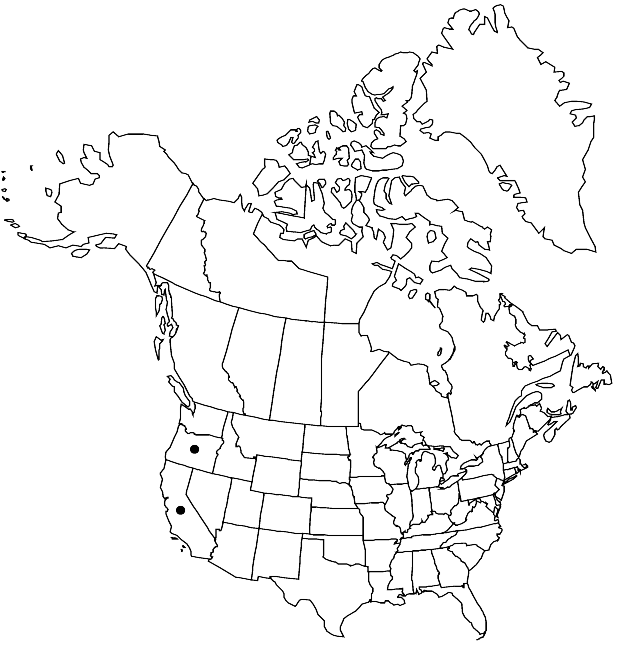Athysanus unilateralis
Fl. W. Calif., 224. 1901.
Plants pubescent. Stems (0.3–) 0.7–2.5 (–3.5) dm. Basal leaves subsessile or petiole to 0.3 cm; blade oblanceolate, obovate, or oblong, (0.3–) 0.7–2 (–2.2) cm × (2–) 4–7 mm, margins entire or with a tooth on each side, apex obtuse, surfaces uniformly pubescent, trichomes cruciform with fewer, 3-rayed ones. Cauline leaves 2–5; blade similar to but smaller than basal, (base cuneate, not auriculate). Fruiting pedicels stout, 1–2 (–3) mm. Flowers: sepals 0.6–1 × 0.4–0.6 mm; petals spatulate, 1.3–1.7 × 0.5–0.8 mm; filaments 0.5–0.9 mm; anthers 0.1–0.2 mm. Fruits elliptic, obovate, or orbicular, flattened or slightly twisted; valves thickened, veins often prominent, glabrous or uniformly pubescent, trichomes subsessile or short-stalked, cruciform and 3-rayed, sometimes mixed with stouter, simple or forked, subsetiform ones to 0.6 mm, not hooked; septum complete, (membranous); ovules 6–12 per ovary; style 0.1–0.2 mm. Seeds often 2 or more, 0.9–1.2 × 0.6–0.8 mm.
Phenology: Flowering Feb–May.
Habitat: Open grassy slopes and flats, friable clay, flood plains, adobe and heavy gumbo clay, gypsum clay slopes
Elevation: 100-900 m
Distribution

Calif., Oreg., Mexico (Baja California)
Discussion
It appears that Athysanus unilateralis is known in Oregon only from Jackson County; it is more widespread in California.
Selected References
None.
Lower Taxa
"elongated" is not a number."thick" is not a number."dm" is not declared as a valid unit of measurement for this property."dm" is not declared as a valid unit of measurement for this property.